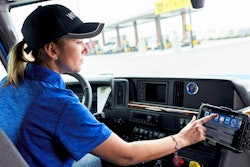
The automotive industry has been using large industrial robot arms for decades to help automate manufacturing lines. More recently, the biggest benefactors of robotics and automation have been supply chain and logistics operators, fueled by the growth of e-commerce and the “Amazon effect”. Autonomous mobile robots (AMRs) now help companies fill orders, handle returns and replenishment and generally optimize the speed and delivery of goods throughout the supply chain, including last-mile fulfillment.
Most of these initiatives involved AMRs that perform one part of the process, such as moving materials in a warehouse from one location to another. Whether it’s an AMR helping an order picker fill an e-commerce order or an autonomous forklift moving pallets from a cargo bay to the warehouse, these types of singular tasks have proven valuable for companies in labor-cost savings and process efficiencies.
The natural question to ask is, “What’s next?” Like a tree that creates several branches from a base trunk, the success of an initial AMR deployment can create several additional opportunities for companies looking for extra productivity.
First, companies with success in one warehouse will naturally want to expand robots to additional locations, which will certainly make AMR vendors happy. Expanding deployments will also require that companies can properly manage robot fleets at scale and efficiently.
A second possibility is that companies explore automating other tasks within a warehouse. With the movement of materials from Point A to Point B handled, perhaps a company looks at mobile manipulation robots that can move to a warehouse shelf and use a robot arm to grab items from a bin or shelf. Or, maybe they use robots to move a picked order to a packing station, where a separate robot arm grabs the object and places it into a shipping box. Robot companies are working on solutions that involve differently designed robots working together to complete the tasks in these and other scenarios.
Click here to hear more about robotics and human employees working together in the supply chain:
A third option for companies looking to expand robots in their facilities is to consider other robots that complete tasks beyond material handling. For example, several industrial cleaning equipment manufacturers have developed self-driving floor scrubbers while some startups have developed autonomous cleaning robots from the ground up. Other companies have combined AMR technology with UVC disinfection technology to create disinfection robots that can clean and sanitize a public space to protect visitors and employees from airborne viruses, including the Coronavirus disease (COVID-19). Robots, drones and fixed-camera systems have been deployed in warehouses to help companies track and monitor inventory levels to lessen the burden of manual inventory checking and counting.
Depending on which scenario a warehouse or fulfillment center chooses, one thing should become clearer as different robot types and styles start entering the facility: they will need to be managed and orchestrated. Unfortunate scenarios can develop if a mobile robot looking to fill an order encounters a floor-cleaning robot that just mopped an area. While most of these robots can avoid each other, it would be better to implement a communication system that lets every robot avoid areas or the path that is occupied by another robot (possibly from a different vendor).
Robot companies have recognized this and are working on basic interoperability standards that address these questions and more.
When deploying robots from multiple different vendors, companies should avoid scenarios where they end up with multiple, proprietary software systems that aren’t integrated. Doing so could result in additional systems integration problems and higher costs when new robot fleets are deployed. Any lengthy delay or extra expenses will slow down the progress of multi-robot scenarios.
In the end, robot companies should set as their goal to enable systems and software that allow companies to quickly deploy robots to help human workers perform their tasks more efficiently, ensuring that the flow of goods remains smooth throughout the supply chain.




















